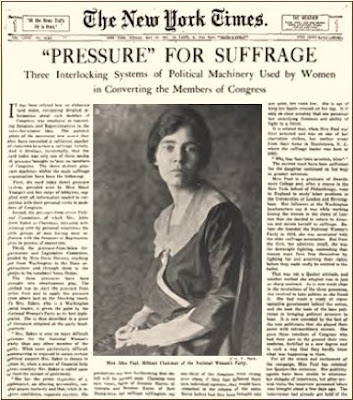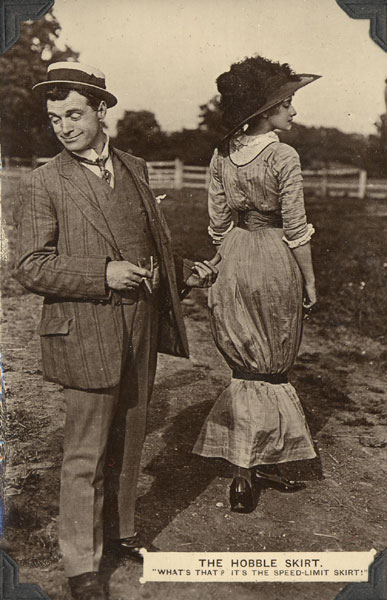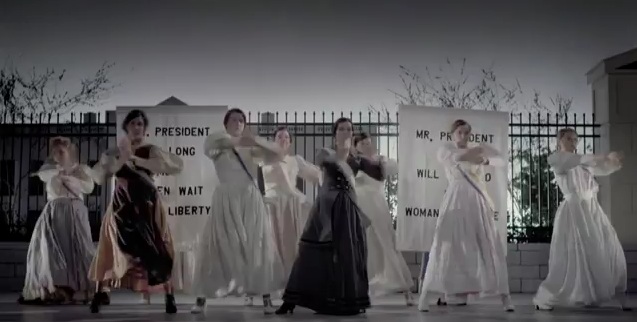If you're in the U.S., happy Nineteenth Amendment day!
To celebrate, here's my favourite women's suffrage music video!*
(Click the screenshot for the link.)
Personally, I think it is brilliant, but you may need to have seen Lady Gaga's (pretty much ubiquitous) "Bad Romance" music video. I have to say, it's a perfect song for this-- I love the way they amplified the already blatant gender power dynamics in the original video.
Some examples from the original (hidden due to NSFW nature of a Lady Gaga video.)
(show spoiler)
"We cry for freedom
Oh hear our voice
And see we’re equal to all men!"

More about the video: (because curiosity got me looking around)
The main singer is Alice Paul, a strident suffragette who was arrested and led a hunger strike in prison that led with her being force-fed and threatened with being sent to an asylum.


The spectacled old guy is Woodrow Wilson, whose relationship with women's suffrage would probably be best be summarized as "It's Complicated."


The anti-suffragette is based on a political cartoon, "I did not raise my girl to be a voter."

The incredibly uncomfortable-looking dress in the "march, march" scene at the end is a hobble skirt. Yes, it was a real thing, and yes, that really is what it was called. The hobble skirt became popular during the same time that women were attempting to free themselves from centuries of restriction, to expand their roles and their agency. A coincidence, I'm sure.



The yellow and red roses (yellow for those who planned to vote for suffrage, red for those against) is also historically accurate.
The face veils that they wear in the beginning are certainly meant to echo the zombie-critters in the Gaga video, but they were also in vogue at the time, especially for motoring. Motoring, unsurprisingly, could be seen as a symbol of freedom and independence. More interestingly, consider what the veil has come to symbolize in various women's rights movements of today.
DegreesOfAffection pointed out that the scene with the congressman who reads a letter from his mother before voting is also historical. The congressman is Harry T Burn, youngest elected congressman who firmly believed that "a good boy always does what his mother asks him to do."


My major complaint against the video (and it's a big one): until the very end, when the white women conveniently forgot about the other issues involved, suffrage was also tied tightly to abolition and supporters of rights for African-Americans. Many of the key women (and men) in the early suffrage movement were African-American.
And yet the video is 100% white actors.
Disappointing.
*Because there are so many to choose from.










 12
12




